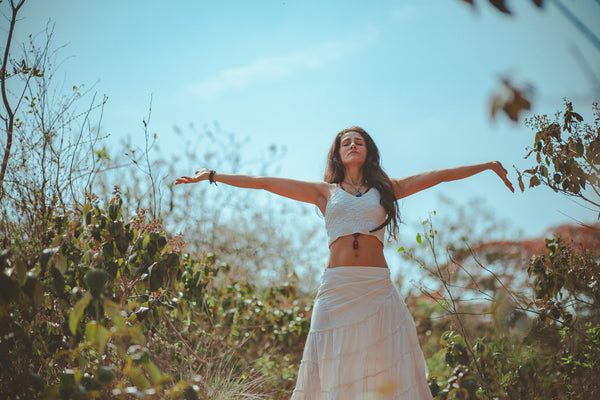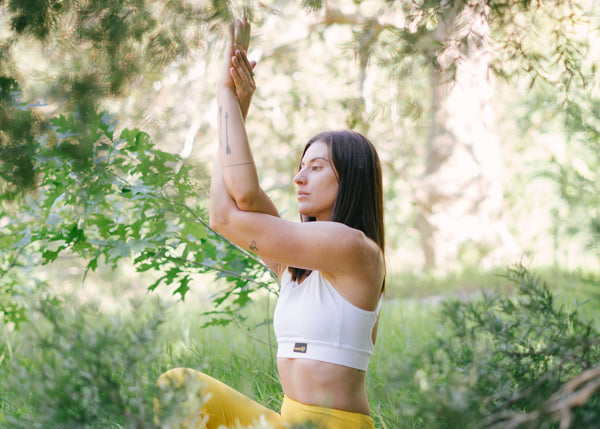What is Yin Yoga?
Yin Yoga is a slow-paced style of yoga that targets the connective tissues, such as ligaments, tendons, and fascia, with the aim of increasing circulation in the joints and improving flexibility. The poses are held for longer periods of time, usually between 3-5 minutes, with the use of props like blocks, blankets, and bolsters to support the body. Yin Yoga is often described as a meditative practice that encourages mindfulness and deep relaxation. It is suitable for all levels of practitioners and can be a great complement to more active styles of yoga or other forms of exercise.
What is the difference between Yin Yoga and normal yoga?
The main difference between Yin Yoga and other styles of yoga is the length of time poses are held and the focus on the connective tissues. In Yin Yoga, poses are typically held for several minutes, while in other styles of yoga, poses are usually held for a shorter duration. Yin Yoga also emphasizes relaxation and meditation, while other styles of yoga may focus on building strength, flexibility, or balance.
Additionally, Yin Yoga often uses props to support the body, while other styles of yoga may not. Yin Yoga is a gentle practice that can be beneficial for increasing flexibility, reducing stress, and improving overall well-being.

What are the five elements of Yin Yoga sequence?
In Yin Yoga, there are five elements or principles that are typically incorporated into a sequence. These elements help create a balanced and harmonious practice. The five elements of a Yin Yoga sequence are:
Intention: Setting an intention for your practice is important in Yin Yoga. It can be something specific you'd like to focus on, such as cultivating mindfulness, finding relaxation, or opening certain areas of the body. The intention guides your mindset and directs your energy throughout the practice.
Stillness: Yin Yoga poses are held for an extended period, usually ranging from one to five minutes or longer. The emphasis is on finding stillness in the pose, allowing the body to relax and release tension gradually. It is during this stillness that you can observe and explore sensations, thoughts, and emotions that arise.
Gentle pressure: Yin Yoga applies gentle pressure to the connective tissues, such as ligaments, tendons, and fascia, through long holds in passive poses. The aim is not to push yourself into deep stretches but to find an appropriate edge where you feel a mild to moderate sensation. This gentle pressure stimulates the tissues and encourages them to release and lengthen over time.
Breath awareness: Paying attention to your breath is crucial in Yin Yoga. Slow, deep breaths help activate the relaxation response and create a sense of calm. You can focus on the breath to stay present, deepen your relaxation, and allow the body to open up naturally.
Time: Time is an essential element in Yin Yoga. Holding poses for an extended duration allows the body to experience the therapeutic benefits of the practice fully. It takes time for the connective tissues to respond and release tension, and the longer holds help cultivate patience and acceptance.
By incorporating these five elements into a Yin Yoga sequence, you can cultivate a practice that promotes relaxation, mindfulness, and deep release in the body. Remember to always listen to your body and modify poses as needed to ensure safety and comfort during your practice.

5 Yin Yoga Poses to Reset Your Body and Mind
Here are 5 Yin Yoga poses that can help to reset your body and mind:
- Child's Pose (Balasana): This pose gently stretches the hips, thighs, and ankles, and can help to release tension in the back and neck.
- Dragon Pose (Low Lunge): This pose targets the hips and groin, and can help to release tension in the lower back and legs.
- Butterfly Pose (Baddha Konasana): This pose stretches the inner thighs and hips, and can help to improve flexibility in these areas.
-
Sphinx Pose: This pose helps to stretch the spine, chest, and shoulders, and can help to improve posture and reduce stress.
- Legs-Up-The-Wall Pose (Viparita Karani): This pose is a gentle inversion that can help to improve circulation, reduce swelling in the legs and feet, and promote relaxation. Remember to hold each pose for several minutes, and use props like blankets, blocks, or bolsters to support your body as needed.

Does yin yoga release toxins?
Yin Yoga may help to remove toxins from the body by improving circulation and stimulating the lymphatic system. The long holds in Yin Yoga poses can help to increase blood flow to the connective tissues, which can help to improve the flow of lymphatic fluid and remove toxins from the body.
Additionally, Yin Yoga poses can help to stimulate the body's natural detoxification processes, such as sweating and elimination through the digestive system. The deep relaxation and meditative aspects of Yin Yoga can also help to reduce stress and promote a sense of well-being, which may further support the body's natural detoxification processes.
It's important to note that while Yin Yoga may offer some benefits for detoxification, it should not be relied upon as the sole method for removing toxins from the body. A healthy diet, regular exercise, and staying hydrated are also important factors in supporting the body's natural detoxification processes.
Why Yin yoga is the best?
Yin Yoga offers unique benefits that make it a valuable practice for many individuals. Here are some reasons why Yin Yoga is highly regarded by its practitioners:
Deep relaxation and stress relief: Yin Yoga promotes deep relaxation and activates the parasympathetic nervous system, which helps counter the effects of chronic stress.
Increased flexibility and joint mobility: Yin Yoga targets the connective tissues, such as ligaments, tendons, and fascia, which tend to be less flexible than muscles.
Balancing energetic flow: According to traditional Chinese medicine, Yin Yoga helps balance the flow of energy or Qi in the body.
Cultivating mindfulness and self-awareness: Yin Yoga encourages mindfulness by inviting practitioners to stay present with their sensations, thoughts, and emotions.
Complementing yang-based practices: Many individuals find Yin Yoga to be a perfect complement to more dynamic, yang-based activities such as vigorous yoga styles or intense workouts.
Support for meditation and introspection: The long holds and stillness in Yin poses create an ideal environment for meditation and introspection. By calming the body and mind, Yin Yoga can enhance focus, concentration, and inner exploration.
Injury prevention and rehabilitation: Yin Yoga can be beneficial for injury prevention and rehabilitation. By gently stretching and promoting flexibility in the connective tissues, it helps maintain joint health, improve circulation, and reduce the risk of injuries.
It's important to note that the "best" type of yoga depends on individual preferences, goals, and physical condition. While Yin Yoga offers numerous benefits, it may not be suitable for everyone. It's always recommended to listen to your body, consult with a qualified yoga teacher or healthcare professional, and choose a yoga practice that aligns with your needs and interests.

